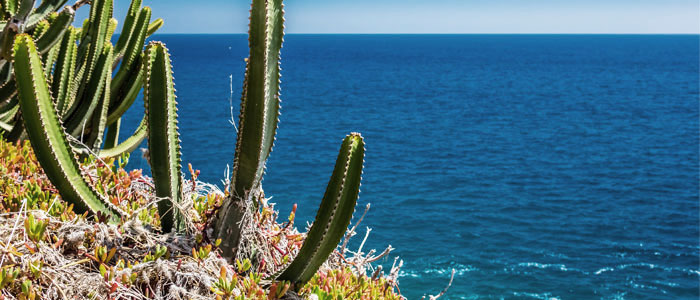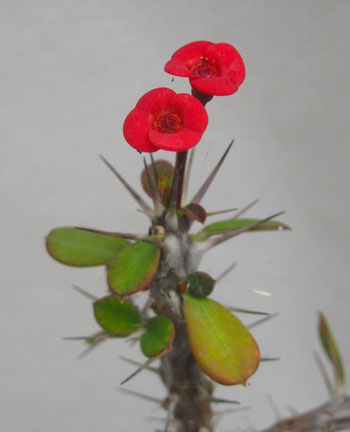The so-called succulent plants include thousands of species located in arid zones around the planet. The Canary Islands are a clear example of the ideal place for these succulent species to grow, thanks to their unique climatic conditions: warm, arid, and windy environment.
The succulent plants or “fat plants” are water retention species, which are adapted to drought conditions. These plants store succum (juice, water) in their leaves, stems, or roots, and often show a thick and fleshy appearance.
The Weather in the Canary Islands
In the Canarian archipelago, there is a Mediterranean-subtropical climate. This means that during the coldest months of the year, the species take a “winter break”. Also, the sun and wind prevailing in the Islands help to keep under control and naturally the fungus or other diseases that could affect these plants.
Typically, the oceanic volcanic islands, arising from the bottom of the sea, are home to unique floras and faunas as a consequence of their development in small enclosures and areas isolated from direct contact with the continent.
In this sense, and at least as far as plants are concerned, in the Canary Islands, there are abundant cases of so-called adaptive radiation or insular differentiation, with flourishing endemic species.
The vegetal landscape of the low zone of the Canary Islands is characterised by the abundant presence of succulent and semi-succulent plants, dominating within them the species of the genus Euphorbia, that come to give a name to the main communities of vegetables. Plants of this type of vegetation have developed strategies to support the arid and semi-desert climate of these areas.
The origin of most of the species that we can find here is North African and to a lesser extent Mediterranean, among the most common succulent plants belonging to the Euphorbiaceae (Euphorbia), Asclepiadoideae (Ceropegia, Caralluma), Crassulaceae (Aeonium, Monanthes), and Asteraceae (Kleinia) families.
Succulent plants in the Canary Islands are grown mainly outdoors and in full sun. Most of these plants are exported to continental Europe; others end up in the most famous natural parks of the Islands.
In our online store of succulent plants, you can find the most outstanding species of this family. Canarius offers a selection of succulent plants endorsed by the highest quality since they have been grown outdoors and under the full sun of the Canary Islands.

















